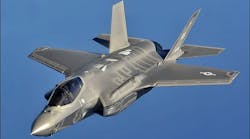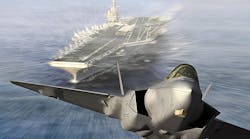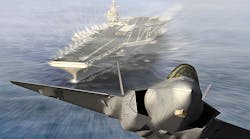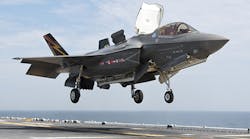The U.S. Dept. of Defense assigned a new, $5.5-billion contract to Lockheed Martin to fund low-rate initial production in Lot 11 of the F-35 Lightning II Joint Strike Fighter program. This contract anticipates 48 F-35A jets for the U.S. Air Force, 18 F-35B aircraft for the U.S. Marine Corps, and eight F-35C aircraft for the U.S. Navy and Marine Corps. The total to be produced in Lot 11 numbers 141 aircraft.
The F-35 is a single-engine, Stealth-enabled aircraft designed for deployment for ground attack and combat, and available in three variants: the F-35A, for conventional takeoff and landing (CTOL); the F-35B, for short take-off and vertical-landing (STOVL), and the F-35C carrier-based variants for Catapult Assisted Take-Off But Arrested Recovery (CATOBAR) variant.
Over 230 of the aircraft have been built to-date in 10 rounds of construction. Lot 11 of the program is due to begin soon, with further contracts to be awarded in the coming weeks, and an overall completion date of December 2020.
"Low-rate initial production" is the term used in military weapon contracting to describe the first phase of a larger production program, during the time when long-leadtime parts and systems are ordered so as to be available when higher-volume assembly begins.
Lockheed is the lead contractor for the F-35 program, and along with other major contractors (BAE Systems, Northrup Grumman, Pratt & Whitney) is under pressure from the Trump Administration to reduce program costs. However, the Pentagon’s total acquisition costs for the jets may rise an estimated 7% to $406.5 billion, according to a recent DoD statement known as a Selected Acquisition Report. Actual costs of the jets have been declining over recent years, but according to a Pentagon statement the forecast
$27.5-billion increase reflects future cost increases for R&D, procurement, and construction.
Separately, DoD is forecasting roughly $1.1 trillion in long-term operational and support costs to keep F-35 aircraft in service through 2070.
“The F-35 program remains within all cost, schedule and performance thresholds and continues to make steady progress,” stated vice admiral Mat Winter, the program’s manager.










